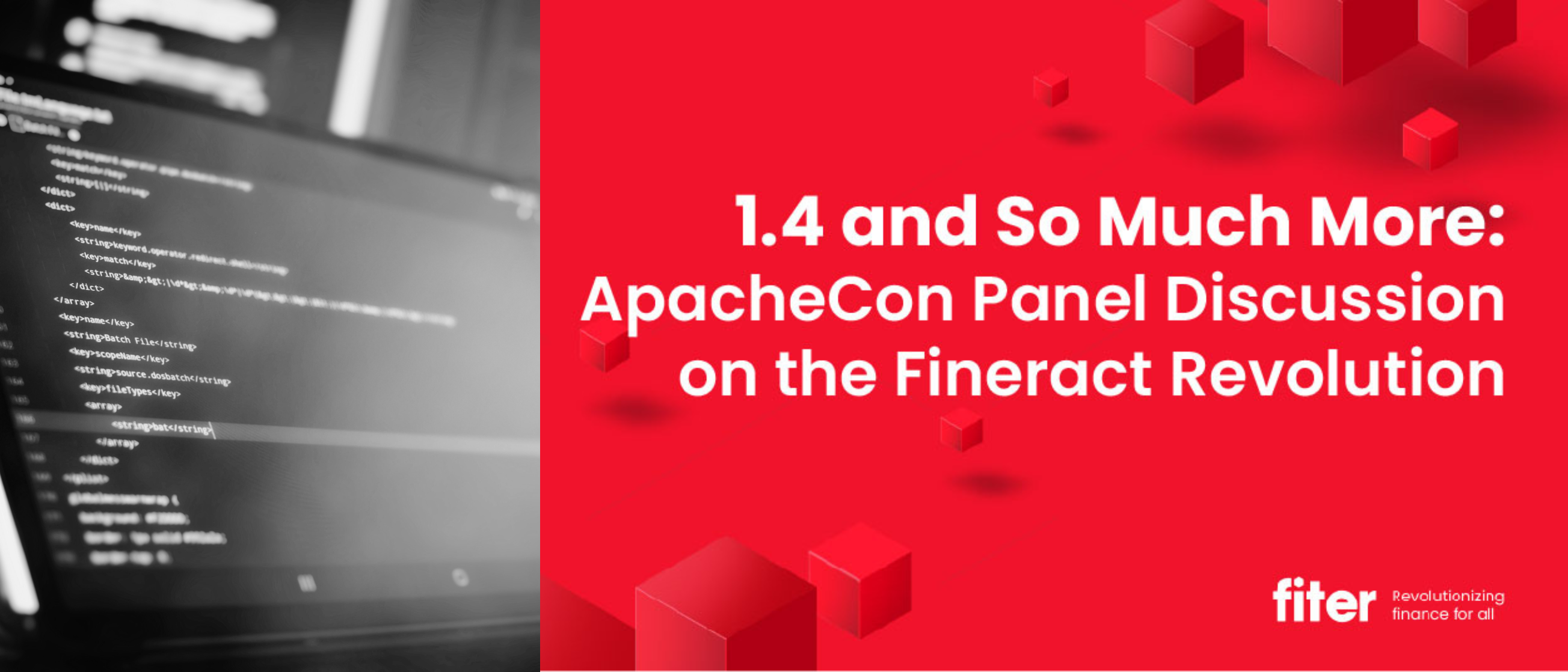Bio:
Javier Borkenztain
Co-founder and CEO of Fiter, an Apache Software Foundation Member and PMC member of the Apache Fineract Project.
Juan Esteban Saldarriaga:
Co-founder of RapiCredit, and Juancho Te Presta, two of the biggest online lenders in Colombia, CEO of Juancho Te Presta, Co-founder, president, and member of the board of the Colombian Fintech Association.
Uzoma Dozie
CEO of Diamond Bank, now merged with Access Bank to become the largest African bank with over 14 million customers.
In part 2 of our CEO panel, we discuss the ins and outs of building on top of the Apache Fineract open-source platform, the future of Fineract as well as what CEO’s should know about open-source. Catch up on additional insights in part 1 of our CEO panel here (add link once available).
Cross-Pollination
Customized Fineract-based products created by FinTechs combined with visibility and transparency within the community shorten product development time to market for other FinTechs. For example, a project in South America that can be customized and adopted in the African market to enhance customer experience there and add more value to that Fineract ecosystem. It is important to tap into the innovation that is going on to cross-pollinate and provide leverage to other companies.
The cross-pollination of ideas from within the global community can be leveraged by thousands of financial institutions across the globe and provides incredible added value to companies everywhere.
Platform potential and white space
Some of the areas of potential within the Fineract platform:
Funding: the way Fintechs are being funded, the way FinTechs connect to peer to originator platforms, sell the loan book to investors, and track those assets to investors all have the potential for solutions to be developed.
Loan visibility solutions: the ability to post loans to platforms, like Mintos, Bondsters, Get Income, Percent in the States, all those platforms that require API integration on how loans are sold to the marketplace and how the marketplace can see loan book performance.
Integration with loan book funders: Information needs to flow back and forth between what is originating and what is being bought as well as performance. The ecosystem should look at platforms like CrossLend in Germany and others to see what they’re doing and how these capabilities can be included in the Fineract open-source platform.
Going to market with open source vs. a traditional system
Since The capital outlay of traditional systems is huge, any downturn in the market hinders capabilities and the ability to adapt to the market and increases the risk of losses because traditional resources are limited.

The forking trade-off
The recommended approach for working with Fineract is the forking approach: leveraging the ability to build customized solutions on the platform, very often by taking a new direction with the software without looking back or upstream first while making sure to contribute back to the community as much as possible. Sometimes that approach is not possible either because the community won’t accept the contribution or that the change is too disruptive. It’s always a trade-off.
Either way, nurturing the community and making your business is running the latest version is the recommended course of action. Regardless, the biggest downside of using open source and customizing to individual needs is probably that future releases are hard to incorporate into specific company solutions.
Once a business starts customizing, a constant process which is carried out to adapt to the market and business needs, it becomes more difficult to merge with the most updated version of the Fineract. Thus, the biggest challenge with using Fineract, is probably that it’s difficult to merge any new releases into individual company versions.
Why should CEOs join the open-source movement?
Using developing markets as an example, each environment has its own unique issues and challenges even within the same continent. Traditional banking systems encounter difficulties in addressing these issues.
The advantage of OSS is that it allows businesses to understand who their customers are and to build cost-effective solutions around it. Customizing traditional global system to address millions of people in a specific environment is extremely difficult and expensive.
With traditional applications, the more customization, the more expensive it gets. These costs cannot be passed on to the people the organization is attempting to serve. The advantage of open source, especially in developing markets, and in testing new markets and new areas, is that OSS supports cost-effective experimentation and testing.
Is the market now moving to open source?
The market is changing faster than ever. Organizations are looking for new systems that quickly adapt to changing markets. More people are asking questions about open-source software, looking for adaptive solutions that allow customized solutions and sustainability. OSS is a new avenue for both traditional businesses and FinTechs to stay ahead of the game. More and more people are beginning to understand the benefits of OSS, but more education is required to help people make smart decisions.
To find out how to use Apache Fineract to grow your business, contact us at: https://fiter.io/contact-us











